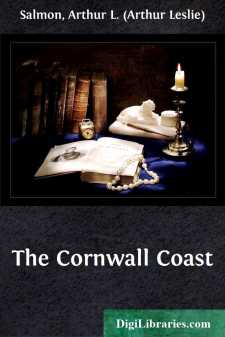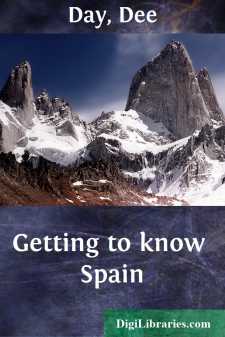Travel
- Africa 29
- Alaska 3
- Asia 46
- Australia & Oceania 26
- Canada 31
- Caribbean & West Indies 5
- Central America 1
- Europe 151
- General 39
- Maps & Road Atlases 1
- Mexico 10
- Middle East 18
- Polar Regions 7
- Reference 11
- Restaurants 1
- Russia 6
- South America 16
- United States 71
Travel Books
Sort by:
When I first indulged the inclination, which I had long entertained, of visiting the famous castle of Chinon, and the equally interesting abbey of Fontevraud—the palace and tomb of our English kings—and paused on my way in "the lovely vales of Vire," and gathered in romantic Brittany some of her pathetic legends, I thought I should have satisfied my longing to explore France; but I found...
more...
ROAD MAPS FOR THE CORNWALL COAST Those who travel through Cornwall by cycle or motor-car will usually find very good roads, but for the most part these only touch the coast at special points; and in some cases it will be wise to leave bicycle or car at hotel or farm if the coast is to be fitly explored. The study of a map will show the tourist what to expect, and he may note the parts where, if he...
more...
by:
Thomas Forester
PREFACE Nearly a century ago, James Boswell made an expedition to Corsica, and was entertained with distinction by Pascal Paoli. Next to conducting Samuel Johnson to the Hebrides, the exploit of penetrating to what was then considered a sort of Ultima Thule in southern Europe, was the greatest event in the famous biographer's life; and, next to his devotion to the English sage, was the homage he...
more...
by:
Dee Day
You probably know that it was a Queen of Spain, Isabella, who made it possible for America to be discovered in 1492. It was an Italian sailor, Christopher Columbus, who first had the strange new idea that he could sail westward from Spain in order to reach the Far East. He came to Spain to tell people about his idea, and everybody he met thought he was crazy because they knew, or thought they knew,...
more...
by:
Robert Kerr
CHAPTER V. HISTORY OF THE DISCOVERY AND CONQUEST OF MEXICO, WRITTEN IN THE YEAR 1568, BY CAPTAIN BERNAL DIAZ DEL CASTILLO, ONE OF THE CONQUERORS.--Continued. SECTION VI. The Spaniards commence their March to Mexico; with an account of the War in Tlascala, and the submission of that Nation. Everything being in readiness for our march to Mexico, we were advised by our allies of Chempoalla to proceed by...
more...
LETTER XIX. May 19. Dear E.:— This letter I consecrate to you, because I know that the persons and things to be introduced into it will most particularly be appreciated by you. In your evening reading circles, Macaulay, Sidney Smith, and Milman have long been such familiar names that you will be glad to go with me over all the scenes of my morning breakfast at Sir Charles Trevelyan's yesterday....
more...
APOLOGIA "There are two ways of writing a book of travel: to recount the journey itself or the results of it." This is also the case with regard to any work which attempts to purvey topographical or historical information of a nature which is only to be gathered upon the spot; and, when an additional side-light is shown by reason of the inclusion, as in the present instance, of the artistic and...
more...
by:
Mary Helen Fee
CHAPTER I The Voyage Begins I Find the Transport Ship Buford and My Stateroom—Old Maids and Young Maids Bound for the Orient—The Deceitful Sea—Making New Friends and Acquaintances. On a hot July day the army transport Buford lay at the Folsom Dock, San Francisco, the Stars and Stripes drooping from her stern, her Blue Peter and a cloud of smoke announcing a speedy departure, and a larger United...
more...
BIOGRAPHICAL SKETCH OF EDWARD STANLEY THE letters which are collected in this volume were written from abroad during the opening years of the nineteenth century, at three different periods: after the Peace of Amiens in 1802 and 1803, after the Peace of Paris in 1814, and in the year following Waterloo, June, 1816. The writer, Edward Stanley, was for thirty-three years an active country clergyman, and...
more...
by:
J.O. Choules
Letter 1. Astor House, New York, April 1, 1851. Dear Charley:— I have just arrived at this place, and have found my companions on hand, all ready for the commencement of the long-anticipated voyage. We regret the circumstances which render it your duty to remain, and we all feel very sorry for the disappointment of your wishes and our hopes. You will, however, feel happy in the thought that you are...
more...











